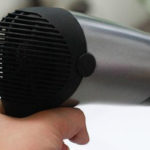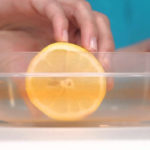Working without gloves can easily lead to splinters when doing chores. Commonly found splinters are wooden, glass, or metal, which, despite their small size, can cause a great deal of discomfort and annoyance. As cells are unable to push out the foreign object, white blood cells will form a barrier around it, causing the wound area to become inflamed and swollen.
These splinters, including wood, often contain bacteria and fungi. Once they enter the body, they create favorable conditions for harmful bacteria such as Staphylococcus, which cause blisters and pimples on the skin and, in more severe cases, can lead to fever and colds. If not removed promptly, there is a high risk of developing tetanus due to Clostridium tetani infection.
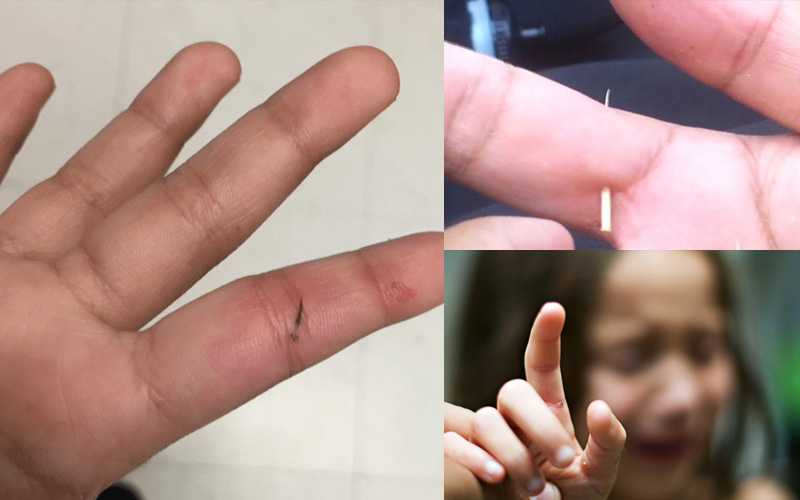 Splinter in the hand
Splinter in the hand
1. Home Remedies to Remove Splinters from Hands
Using Vinegar to Remove Splinters
The high acidity level in vinegar will interact with bodily solvents to draw out splinters quickly. Dilute vinegar with warm water in a 1:1 ratio. First, soak your hand in warm water for 5 minutes to soften the skin around the splinter, then soak it in the diluted vinegar for about 10 minutes. The splinter will come out on its own, and you can easily remove it with tweezers.
Note: This method may sting, so avoid using it for large open wounds.
 Removing splinters with vinegar
Removing splinters with vinegar
Banana Peel Method for Splinter Removal
The natural enzymes in banana peels help push out splinters without causing pain or irritation. Take a piece of ripe banana peel and gently rub it around the affected area. Once the peel dries out and turns darker, cut another piece of banana peel, place it over the splinter, and secure it with a bandage overnight. In the morning, remove the bandage, and the splinter should have come out, allowing you to easily pluck it out with tweezers.
 Removing splinters with banana peel
Removing splinters with banana peel
Using Potato to Draw Out Splinters
Similar to the banana peel method, cut a small piece of potato and place it over the splinter. Use a gauze bandage to secure it in place for about an hour or overnight. The moisture in the potato will help dislodge the splinter quickly and painlessly.
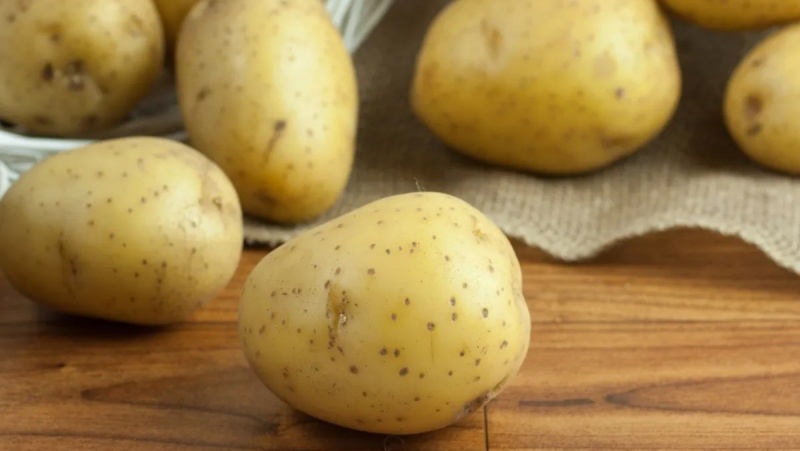 Removing splinters with potato
Removing splinters with potato
Oil as a Lubricant for Splinter Removal
For splinters that are still partially embedded under the skin, using tweezers to remove them can be painful. In this case, you can apply some oil over the splinter to lubricate the area. The oil reduces friction, making the process of extracting the splinter much less painful.
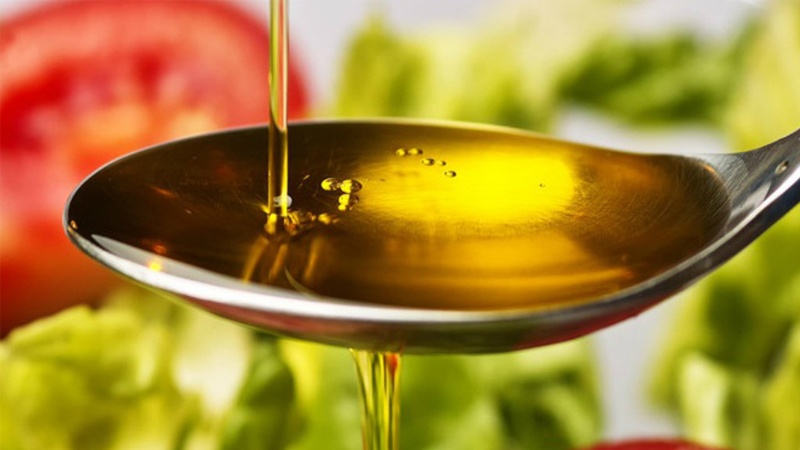 Using oil to remove splinters
Using oil to remove splinters
Using a Glass Bottle to Create Suction
A simple way to remove splinters at home is to use a glass bottle. Choose a glass bottle and fill it almost to the top with hot water.
Note: Avoid using water that is too hot, and pour slowly to prevent the glass from breaking.
After preparing the bottle, press the affected area firmly against the mouth of the bottle. The splinter will be easily drawn out due to the suction created by the hot water.
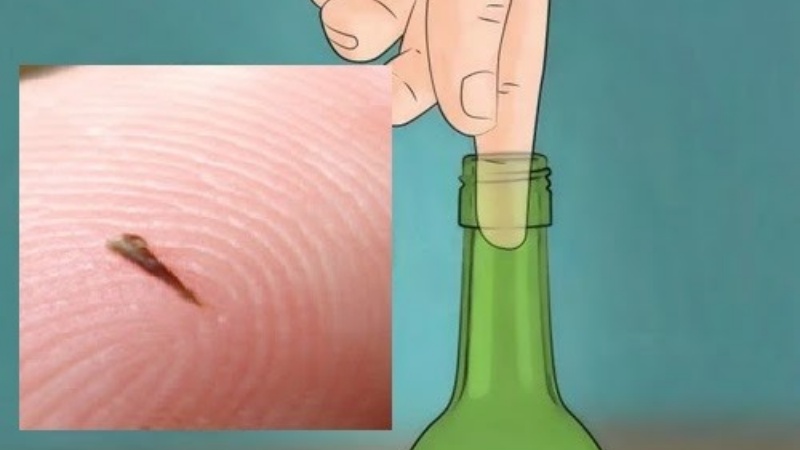 Removing splinters with a glass bottle
Removing splinters with a glass bottle
Baking Soda Paste for Splinter Removal
Mix a teaspoon of baking soda with water to form a paste, then soak the affected area in this solution twice a day. With consistent use over a few days, the splinter will come out on its own and get mixed into the paste.
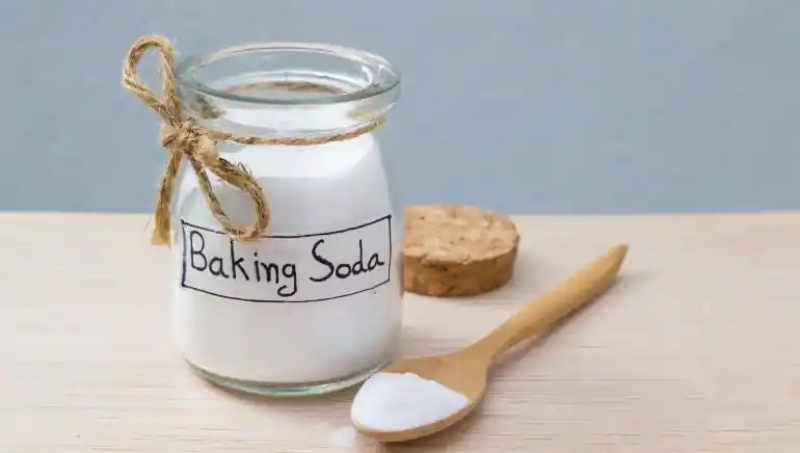 Removing splinters with baking soda paste
Removing splinters with baking soda paste
Using Tape to Remove Splinters
 Using tape to remove splinters
Using tape to remove splinters
When dealing with multiple small splinters that have a portion protruding from the skin, the tape method is effective. Simply gently press the tape over the splinter, smooth it down, and then pull it off quickly and decisively.
Drawing Out Splinters with Soap
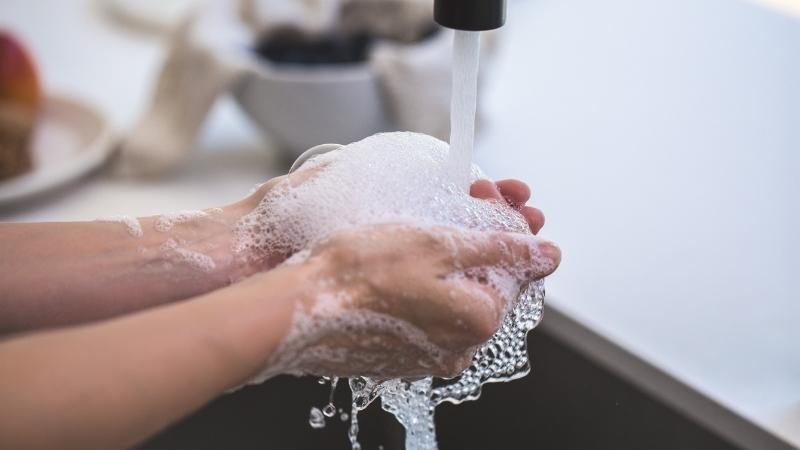 Using soap to remove splinters
Using soap to remove splinters
This method is incredibly simple and accessible to everyone. Create a lather with a bar of soap and apply it to the splinter for a few hours. Over time, the splinter will work its way out, at which point you can use tweezers to remove it.
2. Precautions When Removing Splinters from Hands
Clean the Area Around the Splinter
Before attempting to remove the splinter, wash the affected area with soap and water to prevent infection.
Avoid Pressing on the Area Around the Splinter
Do not scrub or apply pressure to the area as this may push the splinter deeper into the skin. After cleaning, gently pat the area dry with a clean cloth.
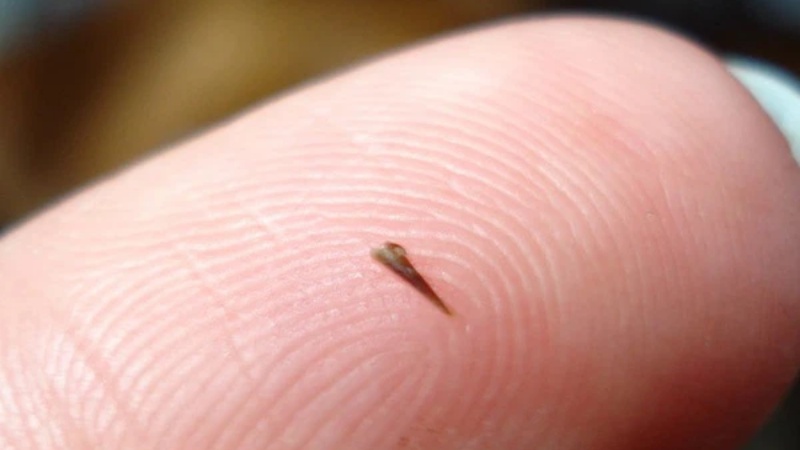 Avoid pressing on the area around the splinter
Avoid pressing on the area around the splinter
Sterilize Tools Used for Splinter Removal
If using tweezers or needles to remove the splinter, be sure to sterilize them with boiling water or alcohol to prevent infection.
Seek Medical Attention for Infected Splinters
If a splinter has been in your skin for several days and shows signs of infection, do not attempt to remove it yourself. Instead, see a doctor to have it safely and quickly removed.
For small splinters, you can try the methods mentioned above. For larger or more complicated cases, consult a doctor to avoid infection.


























